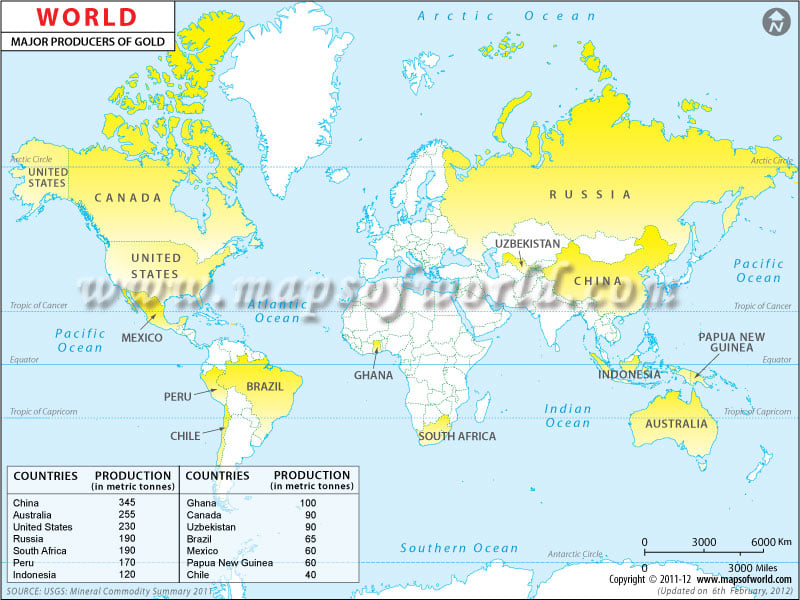Monitory, exchange, jewellery, investment, industry and electronic chemistry, Gold is a metal used in almost all spheres. Generally of a bright yellow color and lustrous, gold is a dense, soft, shiny, malleable and ductile metal.
It is a highly reactive metal and so is used to form many compounds. The high malleability, ductility, and resistance to corrosion makes gold useful in electric wiring, colored-glass production and gold leaf eating.
Gold has been used as a valuable metal before the beginning of recorded history. Since time immemorial, gold has had many symbolic significances and monetary functions.
In ancient times and even now gold is supposed to symbolize power, valour, wealth, warmth, happiness, justice, and intelligence.
The Gold Producers World Map shows the list of the top countries that produce the maximum amount of gold. As the data in the map shows, China is the world’s largest gold-producing nation; it produces 345 metric tonnes of gold annually.
The second-largest gold producing nation in the world is Australia followed by United States, Russia, South Africa, Peru, Indonesia, Ghana, Canada, Uzbekistan, Brazil, Mexico, Papua New Guinea, and Chile.
The largest consumer of gold is India; it purchases approximately 800 tonnes of gold every year.
The majority of medals, trophies, and other laurels awarded to men of achievements are of gold. Winners of sports events in the Olympic Games are awarded golden trophies. Other award prizes such as the Academy Awards, the Golden Globe Awards, the Emmy Awards, and the British Academy Film Awards are all depicted in gold.
MAJOR GOLD PRODUCERS OF THE WORLD-2010
| COUNTRY | PRODUCTION IN METRIC TONNES |
| CHINA | 345 |
| AUSTRALIA | 255 |
| UNITED STATES | 230 |
| RUSSIA | 190 |
| SOUTH AFRICA | 190 |
| PERU | 170 |
| INDONESIA | 120 |
| GHANA | 100 |
| CANADA | 90 |
| UZBEKISTAN | 90 |
| BRAZIL | 65 |
| MEXICO | 60 |
| PAPUA NEW GUINEA | 60 |
| CHILE | 40 |
